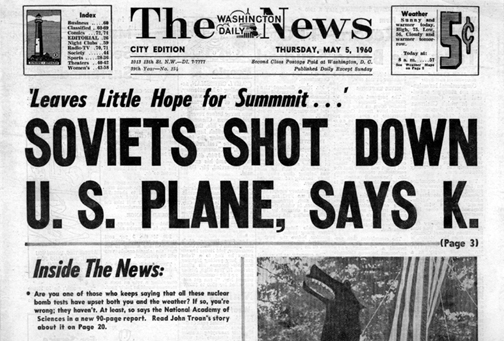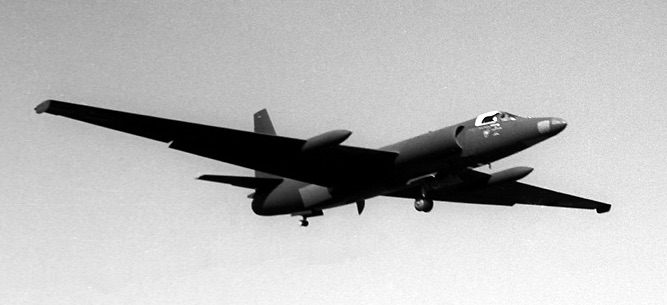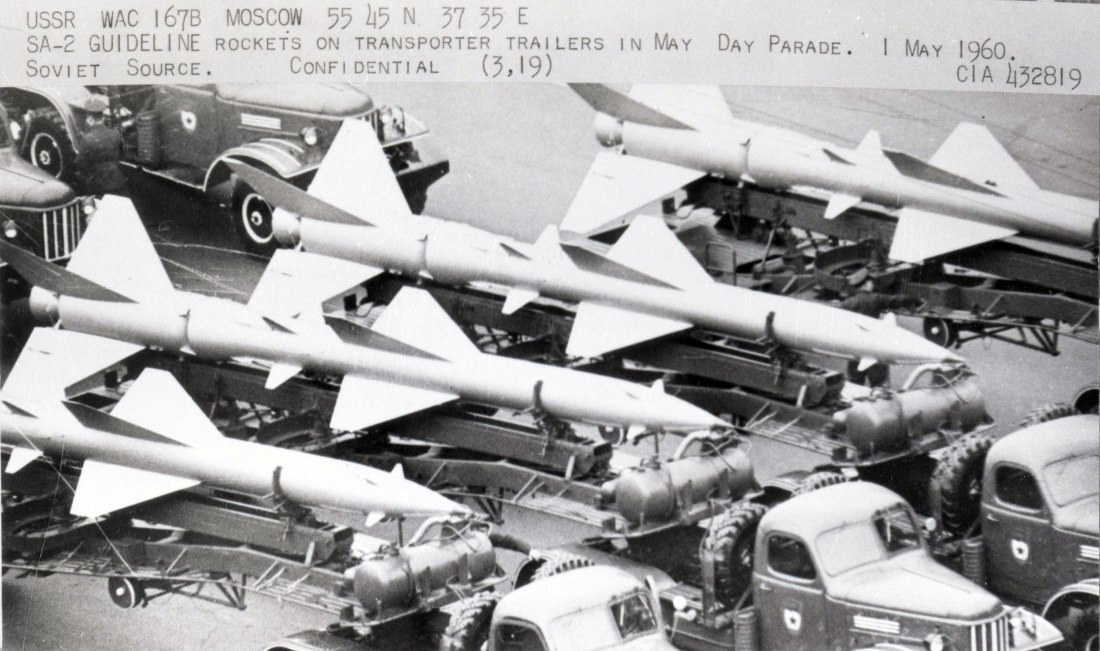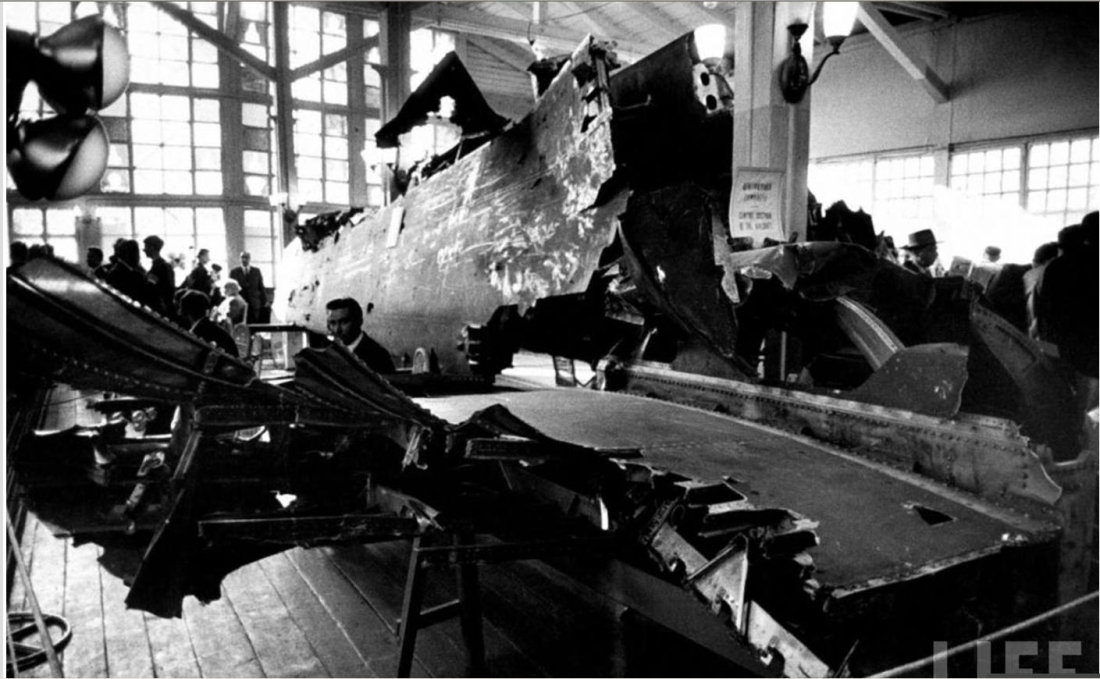It is the 60th anniversary of the shootdown of Gary Powers. This was a seminal event in the Cold War, that prompted massive media coverage at the time, and a steady stream of articles, books, and documentaries since then. Much misinformation has been peddled.

I am not going to rehash most of that here. I devoted 18 pages of my book 50 YEARS OF THE U-2 to the shootdown and its aftermath. I explained the course of events in detail, and refuted the various myths
Instead, I am going to focus on some interesting Russian sources that emerged after I wrote my book in 2005. I used some of that new material in a joint presentation with Gary Powers Jr at the Smithsonian in Washington DC in 2012. But I have never previously written about these latest Russian sources. Neither has anyone else, in the English language.
Gary and I named our presentation “The U-2 Shootdown: Setting The Record Straight”. Our main intent was to give Gary’s father the recognition that he richly deserved. Another purpose was to refute the most enduring myth – that the aircraft had descended to an altitude where is was more likely to have been shot down, either because of a technical failure, or by Gary’s father losing control of it. While doing that, I presented new detail on how the Soviet air defenses around Sverdlovsk reacted to the intruder.

By 2005, we already knew that a brand-new Sukhoi Su-9 interceptor had been scrambled to intercept the U-2 as well as a pair of MiG-19s, one of them being mistakenly shot down by one of the eight SA-2 missiles that were fired, killing the pilot Lt Safronov.* We also knew that the U-2 was disabled by a single SA-2 that exploded behind and possibly below it. The Soviets had credited the SA-2 battalion at Kosulino, southeast of Sverdlovsk, with the downing. Its deputy commander, Major Mikhail Voronov, was in charge that day. He duly received public recognition and honours.
* a long article in the Russian aviation magazine Aviatsiya I Kosmonautica in 2000 claimed that 14 missiles were fired, but gave no evidence
Standard operating procedures at the time called for a battalion to salvo-fire three SA-2 missiles at a target. But only one left the Kosulino site. The official explanation was that the U-2 was a considerable distance away, and the second and third missiles were inhibited from firing because the slant angle to the target meant that they might have damaged the site’s radar antennas. But in 2010, an article in the Russian defense newspaper VPK News (the VPK acronym translates as Military Industrial Courier) suggested that in the heat of the moment, the excited officer in charge forgot to disable the safety catch on the firing button of these two missiles!
This article was written by the director of the Russian Air Defence Museum, and therefore had credibility. The same article also suggested that, even though it was known that they could not reach a high-altitude target, the MiG-19s were scrambled because the Air Marshal commanding the fighter force wanted to claim the credit for the destruction of the intruder, rather than the SA-2 missile force.

The 2010 article agreed with earlier Russian accounts, that a few minutes after the first missile was fired, another SA-2 battalion at Monetnyy northeast of Sverdlovsk commanded by Major Sheludko fired three missiles. Radar operators there saw multiple, closely spaced returns on their scopes from the descending and disintegrating U-2, but misinterpreted them. They thought that the aircraft was intact and operating electronic countermeasures such as chaff. Voronov’s crews had reached the same conclusion, and therefore did not report intercepting the target.
This article also related how a third battalion at Reshety to the west of Sverdlovsk commanded by Major Shugayev subsequently also fired three missiles, and was the one that shot down the MiG. Shugayev was also not aware that the U-2 was down. It seems that the Soviets had not yet introduced the automated ground control intercept (GCI) system that allowed battalions to quickly pass reports to the command posts, and vice-versa. The time lag in messaging around Sverdlovsk proved fatal for the MiG pilot.
Even so, shouldn’t the radar operators at Reshety have taken heed of the interrogation friend or foe (IFF) indication from the MiG on their screens before firing? One version is that the IFF unit on the P-12 Spoon Rest search radar at Shugayev’s battalion was not working. Another is that the MiG pilot had neglected to change his IFF code on the first day of the new month, which was standard operating procedure. A third version suggests that the wingman (Safranov) had difficulty keeping formation with the flight leader in the rarified air at high altitude. According to standard procedure again, only the flight leader would have IFF switched on, to avoid cluttering ground radarscopes. So when Safronov got separated from the flight leader, his MiG was identified by Shugayev’s SA-2 battalion as hostile.

In 2012, VPK News returned to the subject of the shootdown, publishing no fewer than four long articles in consecutive editions. The first two were written by retired Colonel-Engineer Boris Samoylov, and he had an axe to grind.
Samoylov was the deputy commander of another SA-2 battalion situated near Poldnevaya about 30 nautical miles south of Sverdlovsk. He claimed that it was his battalion that fired the first missile, and shot down the U-2. Samoylov provided his recollections of the event, and backed it up with information that he was able to obtain from the Russian Defense Ministry’s archives at Podolsk. Apparently, none of the previous authors had consulted these documents.
The U-2 approached Sverdlovsk from the south, so Samoylov’s battalion was best placed to engage the intruder first. But again, technical difficulties prevented more than one missile being fired. The U-2 was nearing the edge of the battalion’s “strike zone” (eg the missile’s range) before the single SA-2 left its launch pad. Nevertheless, and despite a loss of tracking by the Fan Song guidance and tracking radar as the missile neared its target, Samoylov claimed a ‘kill’. He wrote that the target’s appearance on the radar screen changed rapidly. Battalion personnel saw white clouds develop in the cloudless sky as the warhead exploded, followed by black smoke coming from the disintegrating aircraft. Then, Samoylov added, “two or three minutes later white clouds began to appear low over the forest – these were from exploding missile warheads, meaning that one of the other missile battalions had fired on the target. There were three or four of them.”
Later that day, Samoylov’s battalion learnt that several other battalions had fired at the aircraft, which believed that the U-2 had made sharp evasive turns and used “jamming”. But Samoylov’s radar operators had observed only a straight course by the U-2, and no countermeasures.
(Above) Maps from the new articles in 2010 (left) and 2012 (right). Unfortunately, neither map accords exactly with the story as related by their authors. However, below is a new map produced especially for this website, which I believe to be the most detailed and accurate that has ever published about the shootdown. It shows all six SA-2 sites defending Sverdlovsk, including the four that fired the total of eight missiles, one of which was responsible for shooting down the MiG-19. In another post, I explain how four of these sites were already known to US intelligence thanks to a previous U-2 overflight of the Sverdlovsk area.

Over the next two days, investigators from the command post at Sverdlovsk and air defense headquarters in Moscow visited Samoylov’s battalion. By that time, though, Voronov and Sheludko and the members of their battalions at Kosulino and Monetnyy had been given credit for the shootdown, and been awarded medals. The investigators did not believe that a missile fired from Poldnevaya had enough range to pursue and intercept the U-2. Its wreckage had landed in five different places around Kosulino.
From the classified archives in Podolsk, Samoylov sought to prove that the evidence supported his version of events. He learnt that his battalion fired at 0846, followed by Voronov’s at 0852 and Sheludko’s at 0853. The time-of-flight of ‘his’ missile to the target was about one minute. Samoylov therefore concluded that the U-2 was disabled and descending before any more missiles were fired, and the two other battalions merely “finished it off”. There was no evidence that either battalion had armed the fuzes of their missiles as they approached their supposed target. The wreckage pattern did not correspond with an intercept from the Kosulino missile site.

Samoylov’s two-part article for VPK News was followed by two more by independent author Sergey Selin, who is the son of one of the crew in Samoylov’s battalion. These articles contained more painstaking and, frankly, painful analysis of what happened. Selin tended to support Samoylev’s version of events, without fully endorsing it. But he does provide an explanation for why the credit for the shootdown and the medals went to Voronov and Sheludko. Higher commanders who wrote the after-action reports were not willing to admit that those two batteries had fired on a target that had already been disabled.
I believe Samoylov. Gary Powers said that he was 30-40 miles southeast of Sverdlovsk when he made a 90-degree turn to roll out on a north-westerly heading that would take him over the southwestern edge of the city. (It seems more likely that he was due south at the city). He would therefore have been in range of the Poldnevaya battalion. The turn was gradual, since the U-2 could not turn sharply at high altitude without stalling. Just after the turn, the missile exploded behind him. The battalion at Poldnevaya had fuzed its missile as it neared the target, but had then lost radar guidance. So the battalion’s radar operators were unable to adjust their guidance to follow the U-2 as it turned. That’s why they did not score a direct hit.
This new angle on events is not the only one to emerge from Russia in recent years. I recently became aware of an article written in 2004 by Prof Yuri Erofeev, an electronics engineer who analyzed the “Granger” box that was recovered from the tail of the downed U-2. This was an ECM device designed to defeat the airborne radars of fighters trying to intercept a U-2. It therefore transmitted in the X-band frequency used by the RP-5 Scan Odd radar on the MiG-19. Like the missile operators around Sverdlovsk in 1960, and some other writers since then, Erofeev mistakenly assumed that the Granger was designed to jam the SA-2’s missile’s Fan Song guidance radar. He was therefore puzzled that it did not operate in the latter’s S-band.
Erofeev went on to describe how the Soviets launched Project Sonata to replicate the Granger and improve their knowledge of deceptive electronic warfare in general, and travelling wave tubes (TWTs) in particular.
Incidentally, the U-2 was not equipped with a radar warning receiver or an ECM system to counter the SA-2 until late in 1962. Too late to prevent another shootdown: Major Rudolph Anderson over Cuba during the missile crisis.
With thanks to Kevin Bridge for his translation of the Russian articles, and to former Russian air defense operator Viktor Drushlykov for his comments.
Grateful thanks to radar engineer and fellow author John Schell for his work to make the new map above as accurate as possible. (I moved this map from my other MayDay shootdown article, since it better illustrates this post).
Updated to include Sergey Selin’s theory about why the credit for the shootdown went to the wrong SA-2 battalion commanders.


I agree that Samoylov’s BN most likely downed the U-2. Had a long tail chase but should not have been a challenge except for loss of guidance radar at end… agree if the fuse was activated that it didn’t matter how it came in range to explode. Rarely had a direct hit so not sure the radar would have been much more useful. Of note the professor doing the analysis of the black box in Power’s acft was looking for S band so the Fansong (Fruit Set ?) in question must have been a B model and not the more powerful C version that was deployed to Cuba and shot down Anderson .
LikeLike
The loss of guidance is because the target was destroyed, and starts to disintegrate… The K3 (fuse arming command) in non-jamming environment is transmitted when the missile-target distance is about 400-500 yards…. I guess the idea is that the Novikov did not report that the target was destroyed, because didn’t figure it right away….
LikeLike
Thanks Chris. Really some interesting and new to me stuff. Looking forward to your new book! Fuzzy
LikeLike
Thanks for the updated information and for your search for the truth.
Keep up the great work.
LikeLike